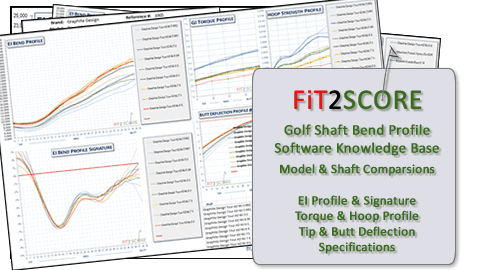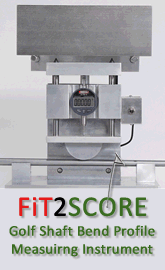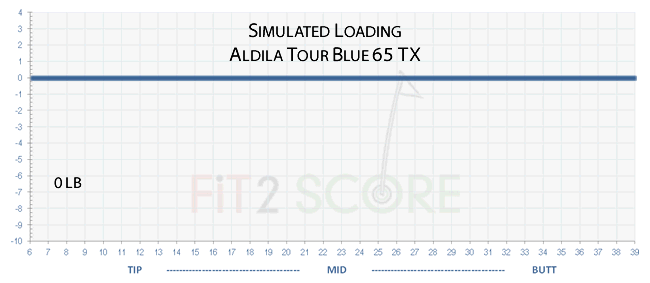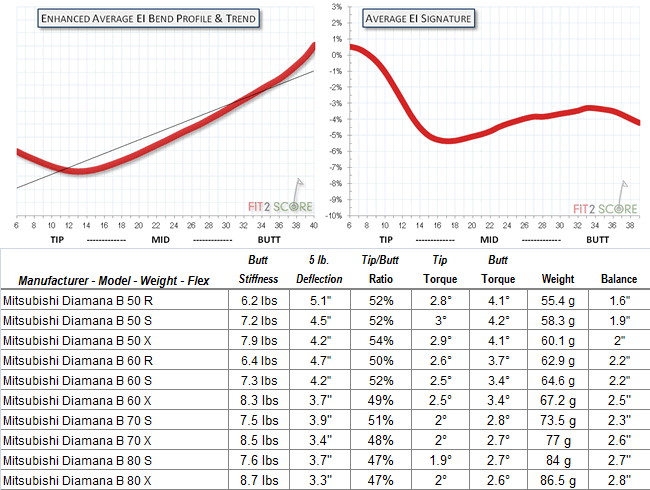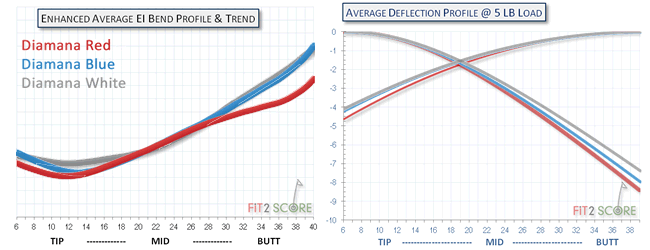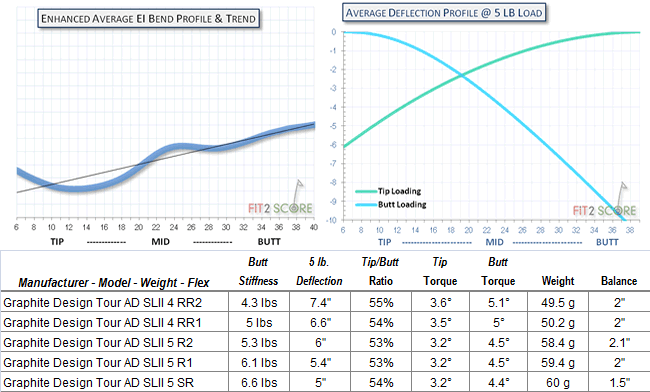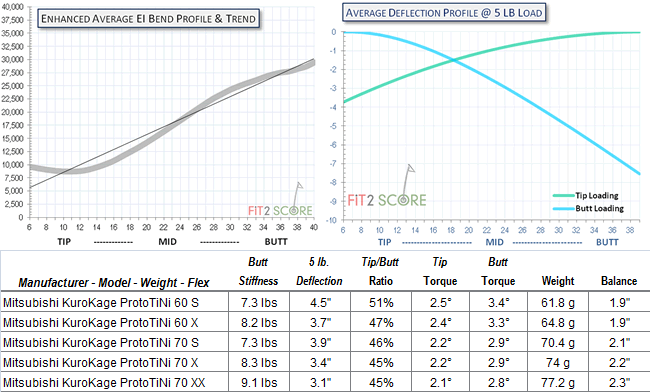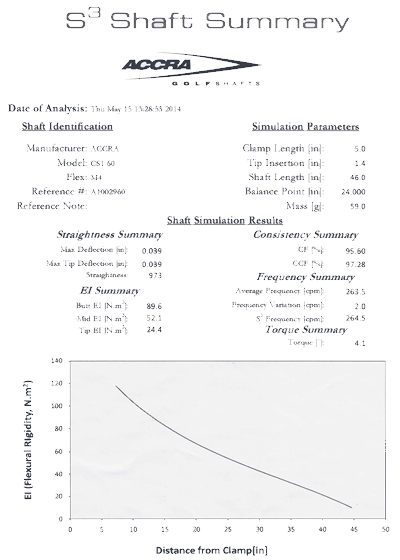Aldila Tour Blue and Green Driver Shafts
 Measurments By Russ Ryden, A Golf Digest America’s 100 Best Clubfitter
Measurments By Russ Ryden, A Golf Digest America’s 100 Best Clubfitter
Fit2Score, Dallas Fort Worth, Texas
Testing by John Dranshak
Dead Solid Perfect Golf Clubs, Columbus Ohio
The Aldila Tour Blue and Aldila Tour Green have now been with us for about a year and this review was first published last year. It has been updated with testing by John Dranshak, a club fitter that has been using 3 point EI profiles to guide his fitting process. These shafts are noted by Aldila as being made from ultra thin carbon fiber. This technology was first introduced in the Aldila NV and was unique in its day. Most premium shafts are now made with multiple layers of thin sheets. In my memory, Aldila pioneered this technique and a look at the radial consistency of these shafts shows what can now be accomplished in the mid price range ($250) of premium golf shafts. The shaft to shaft bend profile consistency of the Aldila Tour shafts is very good. You can be confident your shaft will be a very good match to the shaft you were fit with.
Aldila Tour Blue
The Aldila Tour Blue is an impressive classical design, soft mid in relation to tip and butt. Outstanding radial consistency, average 99.3% with a 0.5% standard deviation. This shaft is available as an option from most club companies.
The technical discussion and measurements are available only to registered readers
Aldila Tour Green
The technical discussion and measurements are available only to registered readers The new addition to the Fit2Score software renders simulated deflection under load and unload as it might happen during a golf swing. It is a very unique tool for understanding the performance of a golf shaft. The ability to model performance of a golf shaft is created by the 3 point bending shaft instrument used by reviewers on this site. Player testing was performed at Golftec (Easton) in Columbus, OH by Joe Stago PGA Professional. Joe tested the Phenom Nasty Long, RIP NV, and standard NV shafts earlier this year and is familiar with the Aldila line of shafts. The shafts were paired with Adams XTD heads including Driver, 16.5* fairway metal and 20* and 23* hybrids. Testing information is available only to registered readers![]() The Aldila Tour Green was in play on the PGA Tour at the end of the 2013 season. I saw it often on video coverage. A low launch design created with a soft trough at 26 inches and a stiff bump at 18. Not an uncommon design but new in the Aldila lineup. The reinforcement you can see in the tip section creates flat deflection below the mid-high maximum bend point, creating a lower launch. The Aldila Tour Green is one of the stock options in the Titleist 913D2 and the Titleist 913D3 drivers and can be found in many of the Titleist fitting carts.
The Aldila Tour Green was in play on the PGA Tour at the end of the 2013 season. I saw it often on video coverage. A low launch design created with a soft trough at 26 inches and a stiff bump at 18. Not an uncommon design but new in the Aldila lineup. The reinforcement you can see in the tip section creates flat deflection below the mid-high maximum bend point, creating a lower launch. The Aldila Tour Green is one of the stock options in the Titleist 913D2 and the Titleist 913D3 drivers and can be found in many of the Titleist fitting carts. Performance Testing by John Dranshak


